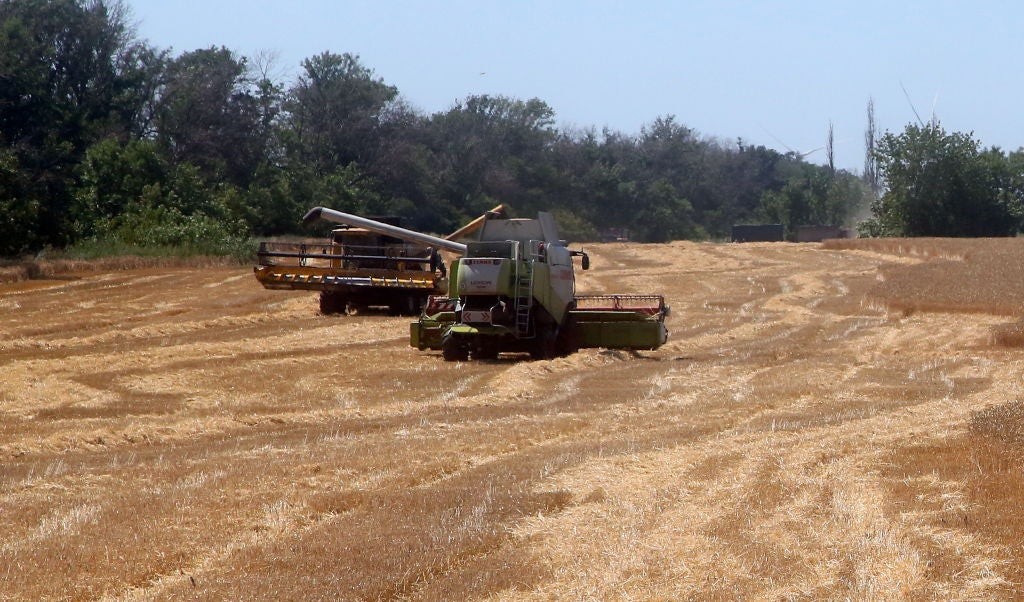Ukraine’s role in global trade, particularly in agricultural products, has been significantly impacted by the ongoing conflict with Russia. This article examines Ukraine’s comparative advantage in specific commodities before the conflict, highlighting its importance to the global economy and the potential consequences of disruptions to its trade.
 Wheat Field in Ukraine
Wheat Field in Ukraine
Ukraine was a major player in the global agricultural market, known for its fertile land and favorable climate. Its pre-conflict trade data reveals a strong comparative advantage in several key commodities. While the war has dramatically altered the landscape, understanding Ukraine’s pre-war trade strengths is crucial for assessing the long-term economic impacts of the conflict.
Ukraine’s Pre-War Comparative Advantage: A Deep Dive
Before the 2022 Russian invasion, Ukraine held a significant comparative advantage in the global market for several agricultural products. A comparative advantage exists when a country can produce a good or service at a lower opportunity cost than other countries. This allowed Ukraine to specialize in the production and export of certain goods, contributing significantly to its economy and global food security.
Utilizing the Revealed Comparative Advantage (RCA) formula, which measures a country’s export share of a specific good compared to the world’s export share of that good, Ukraine demonstrably specialized in several key areas:
- Cereals: Ukraine boasted an RCA score of 27.4 for cereals, indicating its exports were over 27 times its ‘fair share’ in the global market. This was largely driven by substantial exports of maize, barley, and wheat, each with even higher individual RCA scores.
- Oilseeds: Ukraine was the world’s leading exporter of sunflower seeds, with an impressive RCA score of 138.1. This dominance stemmed from favorable growing conditions and established infrastructure for processing and export.
- Iron and Steel: While agricultural products were its main strength, Ukraine also held a comparative advantage in iron and steel, specifically semi-finished products and pig iron.
These high RCA scores underscored Ukraine’s critical role in global food security and specific industrial sectors. The country was a major supplier of key agricultural commodities to countries worldwide. The disruption of these exports due to the ongoing conflict has had far-reaching consequences for global food prices and supply chains.
Key Export Destinations and the Impact of Disruption
Ukraine’s major export partners included China, Poland, and other European nations, as well as several countries in Asia and Africa heavily reliant on its agricultural exports for food security. The disruption of these trade flows due to the conflict has led to:
- Increased global food prices: Reduced supply of key grains and oilseeds has contributed to inflationary pressures on food prices worldwide.
- Supply chain disruptions: The war has severely disrupted global supply chains reliant on Ukrainian agricultural products and raw materials.
- Economic hardship for Ukrainian farmers and businesses: The conflict has devastated Ukraine’s agricultural sector, impacting livelihoods and contributing to economic instability.
Looking Ahead: Uncertainty and Reconstruction
While the future of Ukraine’s trade remains uncertain, understanding its pre-war comparative advantage highlights the significant economic and geopolitical consequences of the ongoing conflict. Rebuilding Ukraine’s agricultural sector and re-establishing its trade relationships will be crucial for the country’s economic recovery and for restoring stability to global food markets. The extent to which Ukraine can regain its comparative advantage will depend on the duration and outcome of the conflict, as well as the level of international support for its reconstruction.